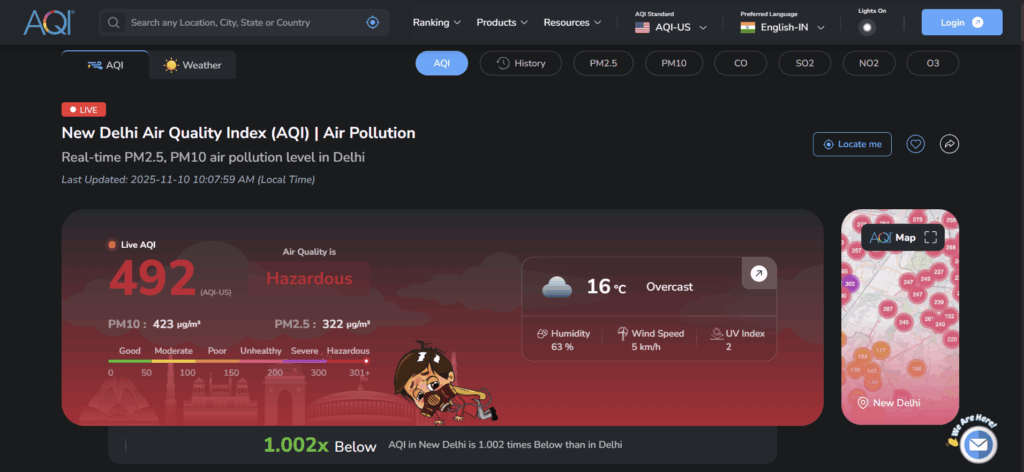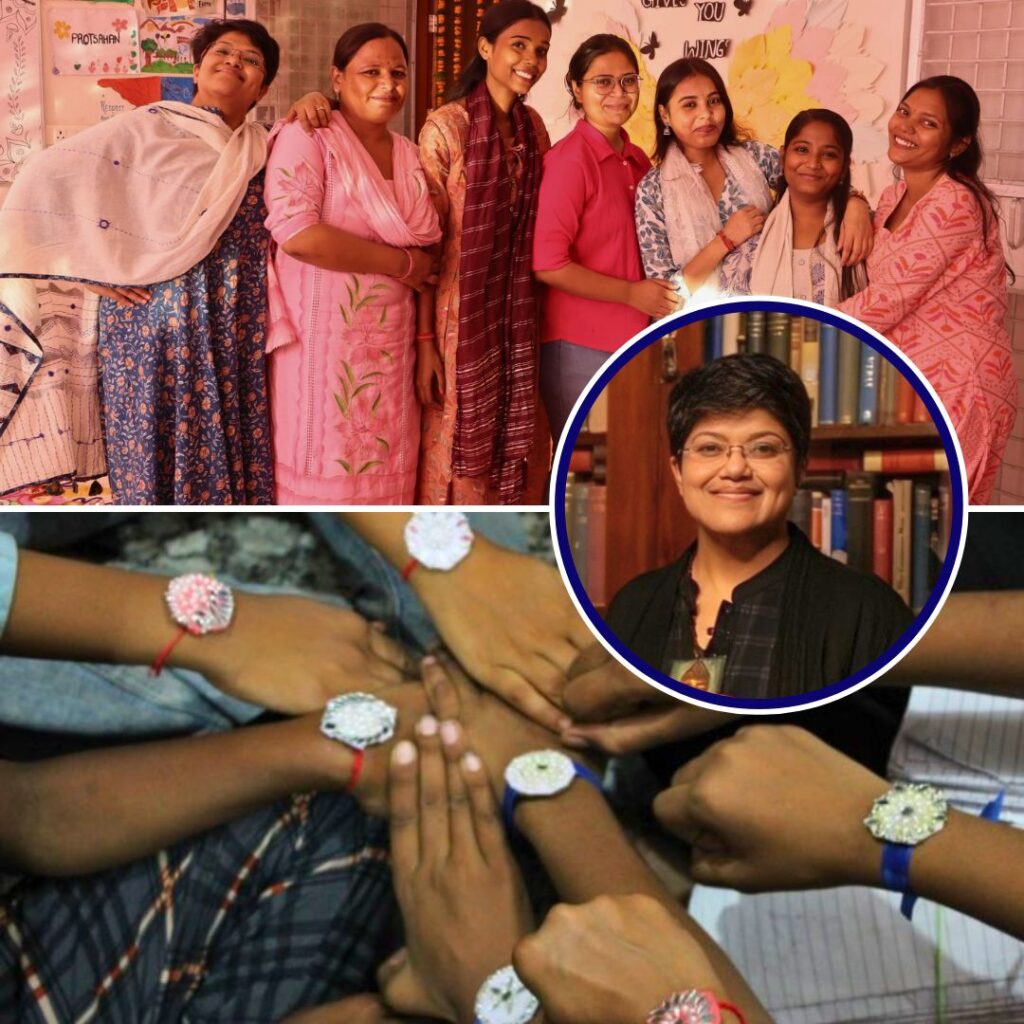Hundreds of anxious residents, including schoolchildren, parents, and environmental activists, converged at India Gate on November 9 demanding urgent interventions to address Delhi’s increasingly toxic air. The protest, sparked by a relentless rise in air pollution and an AQI that frequently breached 400 in multiple neighbourhoods, saw demonstrators carrying homemade banners declaring “Breathing is killing me” and “Help us breathe”.
The Commission for Air Quality Management (CAQM) held a review meeting and decided against invoking Stage 3 of the Graded Response Action Plan (GRAP) for now, citing the marginal improvement and forecasts predicting continuation of ‘very poor’ air quality. Stage 3 measures, which include bans on non-essential construction and heavy vehicular restrictions, remain on standby as ongoing Stage 1 and 2 restrictions continue.
Last night, during the protest many held up prescriptions and nebulisers, symbolic reminders of the city’s mounting health crisis, especially among the youngest and oldest citizens. Police cited lack of prior permission and imposed preventive measures, detaining around 80–100 protesters, among them children and elderly citizens, claiming only those blocking traffic were held and all later released.
Some demonstrators alleged they were manhandled, while activists described the incident as “tragic,” lamenting the silencing of those desperately seeking their fundamental right to breathe.
Delhi’s air quality showed slight improvement on Monday, November 10, 2025, with the Air Quality Index (AQI) dropping to 346 from a season-high of 391 the previous day, though it remained firmly in the ‘very poor’ category.
Delhi’s Air Emergency: Statistics and Suffering
Key monitoring sites, including Anand Vihar (379), ITO (376), and Okhla Phase-2 (348), reflected unhealthy levels, with several locations registering readings above 400.
The situation prompted public health warnings, with children, elderly, and chronic patients urged to remain indoors and avoid strenuous activity. Since Diwali, AQI has barely dipped below the “danger” zone, a pattern worsened by colder nights trapping pollutants in the city.
Activists called for transparent air quality data, improved advisories, and clear accountability for anti-pollution funds.

Protests, Policy, and Political Inaction
This India Gate protest was the latest in a series of citizen actions since Delhi’s air quality began plunging post-Diwali. Previous advisories steered groups to Jantar Mantar, the city’s designated protest site, police reiterated this, but demonstrators insisted India Gate’s symbolism was crucial in their plea for government accountability.
The last two weeks have seen school closures, outdoor activity bans, and weather interventions such as water sprinkling, but citizens and experts warn these measures don’t address root causes like unchecked vehicular emissions, construction dust, and crop burning in neighbouring states.
People stress “even mild relief does not mean the air is safe,” urging sustained action beyond short-term regulatory steps. Despite calls for an air emergency, authorities have resisted imposing full lockdowns or the strictest Graded Response Action Plan protocols.
In the national capital, there’s no right to live, or even to speak up for it! Children, students, mothers, and the elderly came out demanding clean air, but Delhi Police responded with force and detentions. This is the VISHWAGURU model in action. #HelpUsBreathe #AirPollution pic.twitter.com/a0wU2PuxUh
— Ashish Srivastava (@AshishOnGround) November 9, 2025
The Human Toll: Voices Behind The Protest
Beyond statistics and policy debates, the Delhi air pollution protest reflected the profound human suffering behind the numbers. Many participants shared deeply personal stories of illness exacerbated by toxic air, parents spoke of children requiring frequent hospital visits for asthma and respiratory distress. Elderly residents recounted decades living with compromised lung health, often worsened during winter months.
The protest became a forum for these voices, highlighting inequalities as poorer communities suffer most from polluted air yet have least access to healthcare or protective measures like air purifiers.
The protest also served as a call for inclusive policy-making, urging authorities to factor social equity in interventions so the most vulnerable are not left to bear the burden alone. As one protester put it, “children cannot be replaced, but ministers can be.”
This human dimension brought urgency and moral weight to an environmental crisis too often reduced to numbers and blame games, reminding the city that clean air is a shared right essential for life and dignity.
The Logical Indian’s Perspective
For a child to ask “Help us breathe” in the heart of India’s capital, only to be detained, epitomises a grave disconnect between authority and empathy. The Logical Indian believes clean air is a fundamental human right, embedded in the guarantee to life itself.
Detaining peaceful protesters, especially children, misses the spirit of dialogue and shared responsibility needed to address Delhi’s chronic air crisis. This city’s struggle is everyone’s struggle. Citizens, government, and law enforcement must work together, not in confrontation but in care, setting a precedent for environmental justice.
India gate clean air protest, we are taken away, shoved in a bus. pic.twitter.com/zSyieAT3uC
— Vimlendu Jha विमलेंदु झा (@vimlendu) November 9, 2025











